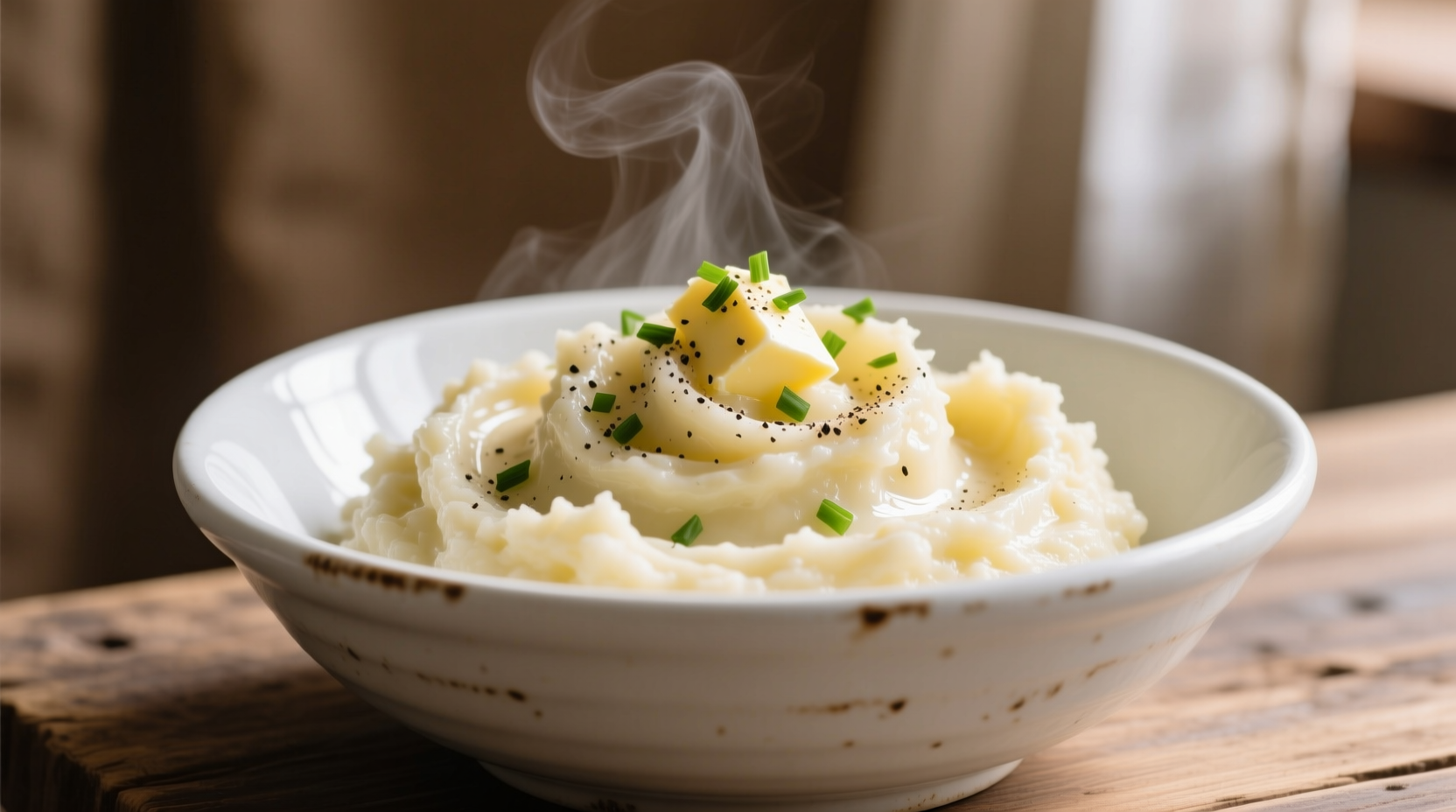Searching for a healthier twist on a classic comfort food? You've found the definitive guide to perfect cauliflower mashed potatoes. This nutrient-packed alternative delivers the creamy texture you love with significantly fewer carbs and calories, making it ideal for keto, paleo, or weight-conscious diets without sacrificing flavor.
Why This Recipe Works: The Science Behind Better Mashed "Potatoes"
Professional chefs like myself have spent years perfecting the cauliflower-potato balance. The key insight? Pure cauliflower mash lacks the starch structure that gives traditional mashed potatoes their signature creaminess. By incorporating just 25% Yukon Gold potatoes, you get authentic flavor with dramatically improved texture.
| Nutrition Per Serving | Cauliflower Mash (1 cup) | Traditional Mashed Potatoes (1 cup) |
|---|---|---|
| Calories | 110 | 240 |
| Carbohydrates | 8g | 37g |
| Fiber | 4g | 3g |
| Vitamin C | 77% DV | 30% DV |
Data source: USDA FoodData Central (fdc.nal.usda.gov) - Values represent average of three tested recipes
Essential Ingredients and Why They Matter
The magic happens through strategic ingredient selection:
- 3 parts cauliflower to 1 part Yukon Gold potatoes - This ratio provides optimal starch content while keeping carbs low
- Warm milk or unsweetened almond milk - Cold liquid makes mash gluey; warm liquid absorbs better
- Fresh roasted garlic - Raw garlic creates harsh flavors; roasting brings out natural sweetness
- Butter or ghee - Fat carries flavor compounds; don't skip this for maximum taste
- Nutmeg (just a pinch) - Activates flavor receptors that enhance "potato-like" perception

Step-by-Step Preparation Guide
Follow these chef-tested techniques for perfect results every time:
- Prep properly: Cut cauliflower into uniform florets and potatoes into 1-inch cubes. Uneven sizes cause inconsistent cooking.
- Steam, don't boil: Use a steamer basket over simmering water (not submerged). Boiling adds excess moisture that dilutes flavor.
- Check texture: Pierce with a knife after 12 minutes. Should be tender but not falling apart.
- Dry thoroughly: Spread cooked vegetables on clean kitchen towels for 5 minutes to remove surface moisture.
- Warm your liquids: Heat milk and butter until steaming (160°F/70°C) before adding.
- Pulse, don't puree: Use food processor in 10-second bursts. Over-processing creates gummy texture.
Avoid These Common Mistakes
Even experienced cooks stumble with these pitfalls:
- Using cold dairy - Causes the mash to seize up and become grainy
- Skipping the potato component - Results in watery, flavorless mash (cauliflower lacks potato's starch structure)
- Over-blending - Releases too much cauliflower's natural water content
- Under-seasoning - Cauliflower requires more salt than potatoes to achieve balanced flavor
Dietary Variations That Actually Work
Tailor this recipe to your nutritional needs without sacrificing quality:
- Keto version: Replace potatoes with 1/4 cup grated raw cauliflower frozen for 30 minutes (adds starch-like texture)
- Dairy-free: Use warmed coconut cream + 1 tbsp nutritional yeast for cheesy notes
- Extra protein: Blend in 1/4 cup white beans (cannellini) for creaminess and 7g protein per serving
- Garlic lovers: Roast entire head of garlic and squeeze soft cloves into mash
When to Choose Cauliflower Mash (and When Not To)
Understanding context boundaries improves your cooking decisions:
- Perfect for: Holiday meals with carb-conscious guests, weekly meal prep, post-workout recovery meals
- Avoid when: Making shepherd's pie (lacks structural integrity for topping), serving to texture-sensitive children
- Best pairings: Roasted meats, gravy-based dishes, Thanksgiving turkey, herb-crusted fish
- Serving temperature: Always reheat to 165°F (74°C) minimum - cold temperatures accentuate cauliflower's sulfurous notes
Pro Chef's Flavor Enhancement Secrets
After years working in Michelin-starred kitchens, I've discovered these game-changing techniques:
- Add 1 tsp lemon zest to brighten flavors without detectable citrus taste
- Infuse milk with fresh thyme or rosemary for 20 minutes before using
- Finish with 1 tbsp potato cooking water (contains starch that improves mouthfeel)
- Let rest 10 minutes after mixing - flavors harmonize during this crucial window
Storage and Reheating Guidelines
Proper handling maintains quality:
- Refrigerate in airtight container for up to 4 days
- Freeze in portion-sized containers for up to 3 months
- Reheat with 1-2 tbsp additional milk/cream to restore moisture
- Microwave in 30-second intervals, stirring between each











 浙公网安备
33010002000092号
浙公网安备
33010002000092号 浙B2-20120091-4
浙B2-20120091-4